Pre-war Watnall in colour
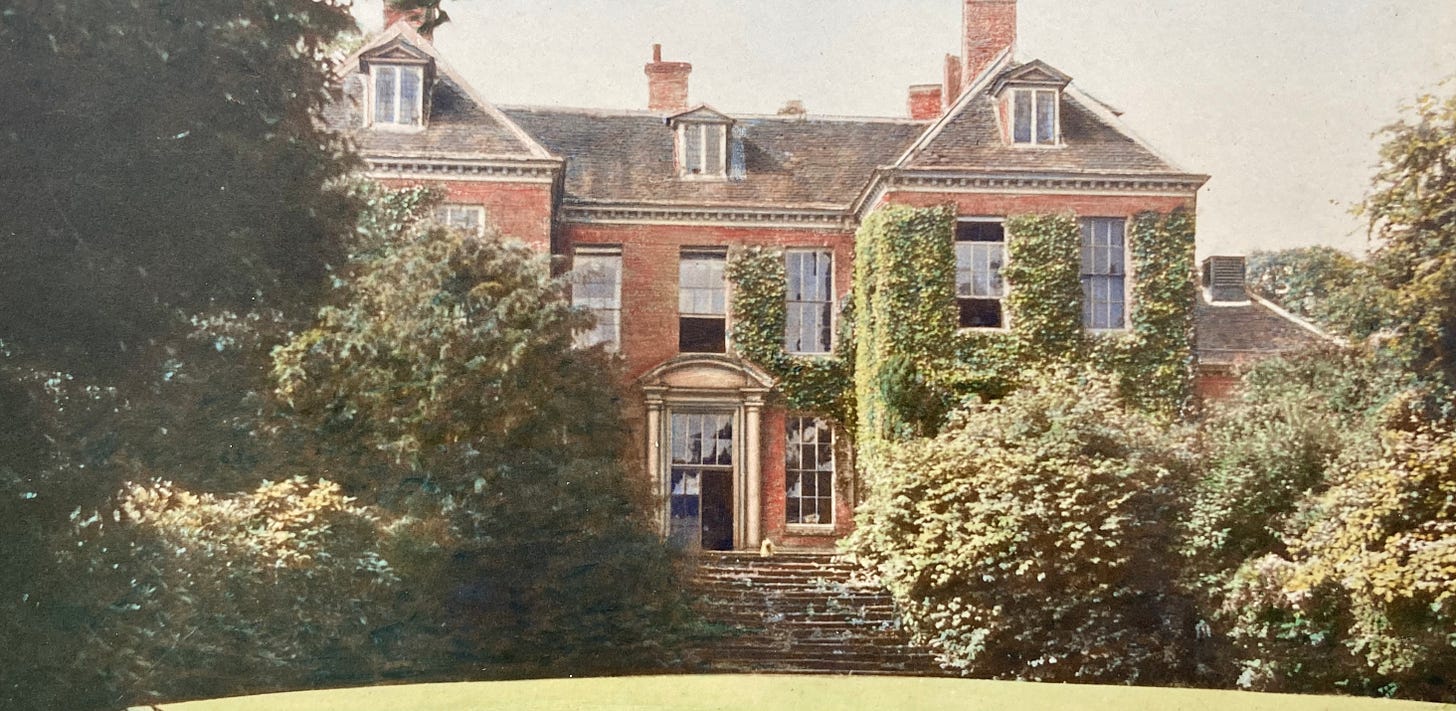
These colour photographs help illustrate an article published in 1938 about Watnall, on the cusp of great change. Pre-war; pre-RAF camp; pre-widened, busy, tarmac road; a Watnall of thatched cottages, still predominantly agricultural and still with old squire Rolleston up at the hall. The white, dusty road is quite clear in the pictures. Further on past the hall and around the bend is the Queen's Head pub leading on towards Watnall Corner. The new road to Greasley church did not yet exist and the "lovely mile" referred to in the article is the old Church Hill, still peaceful and lovely today. This same stretch of road, driven by horse and trap, gets a few of mentions in local boy DH Lawrence's work which I’ve added at the end…
----------~~----------
"WATNALL, a charming village which we remember for its neat cottages, stately trees, and the fine entrance to the drive of the great house, all in happy company on a lovely bit of road with holly-crowned walls. Well worthy of admiration are the great iron gates of Watnall Hall, shaded by mighty trees. Probably wrought by Huntingdon Shaw, the Nottingham blacksmith of renown, they bear a gilded eagle's head, the crest of the ancient family of Rollestons, who have lived here since the time of Queen Elizabeth. Formerly these same gates occupied a different position. They served to guard a flight of ancient and worn stone steps, almost immediately in front of the house. To that time belongs part of their house, standing on high ground in a park of 60 acres with fine old timber. It looks across to the hills of Annesley, where lived Mary Chaworth, Byron's first love; and from there she came to dance at Watnall's famous balls. We remember the village, too, as the beginning of a fine little ride down the hollow and up the hill to where the bells in Greasley's lofty tower call the folk to church. It is a lovely mile, with beauty all the way."
Source: Arthur Mee, The King's England: Nottinghamshire, Hodder & Stoughton, 1938
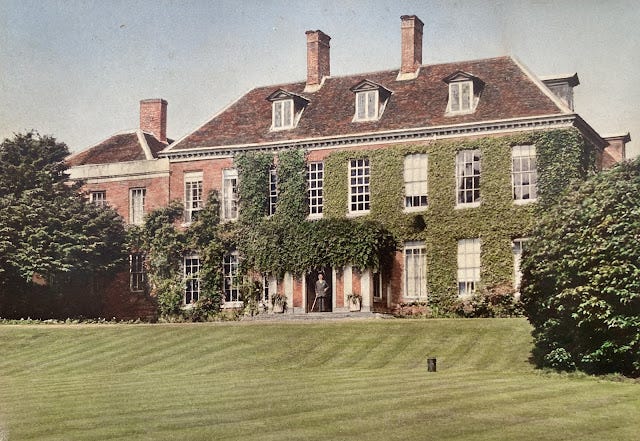
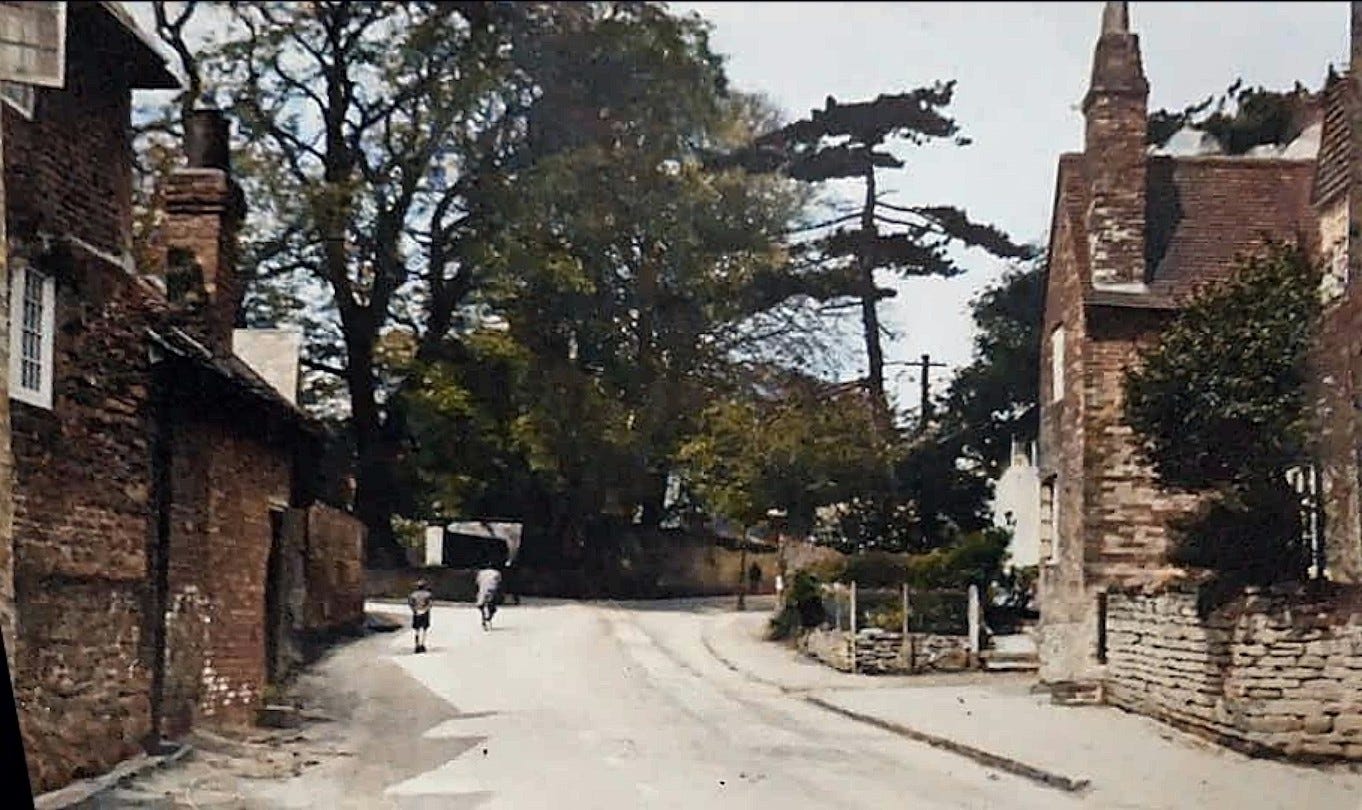
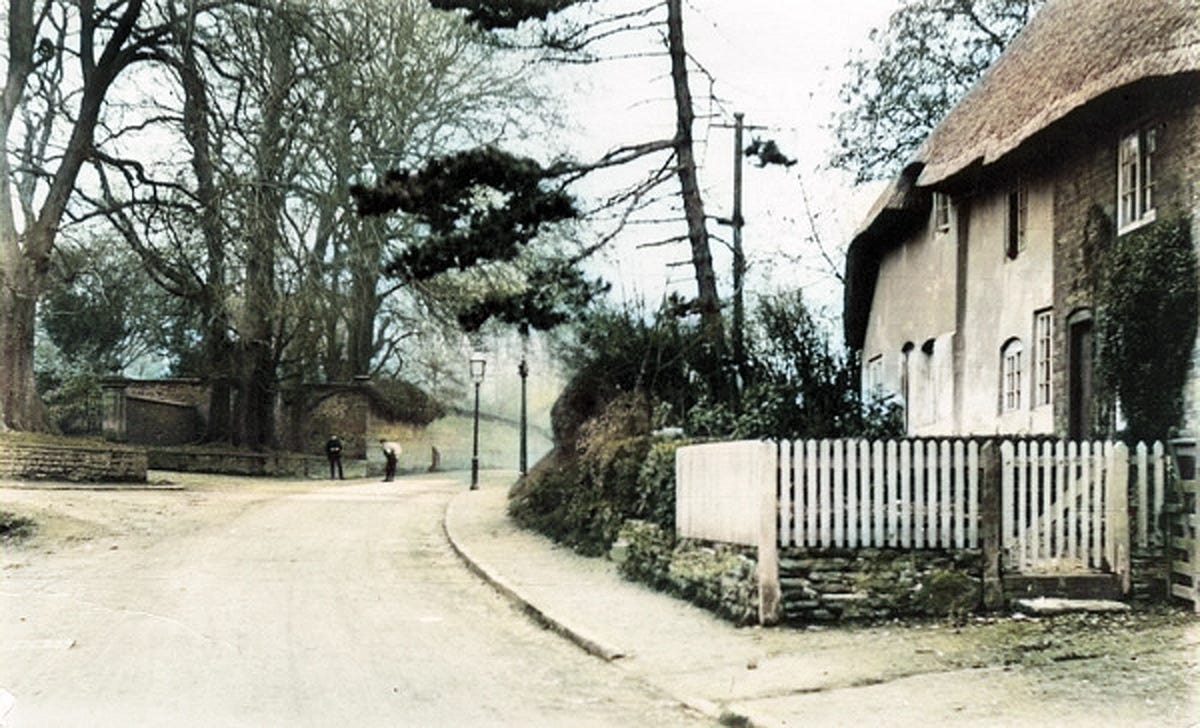

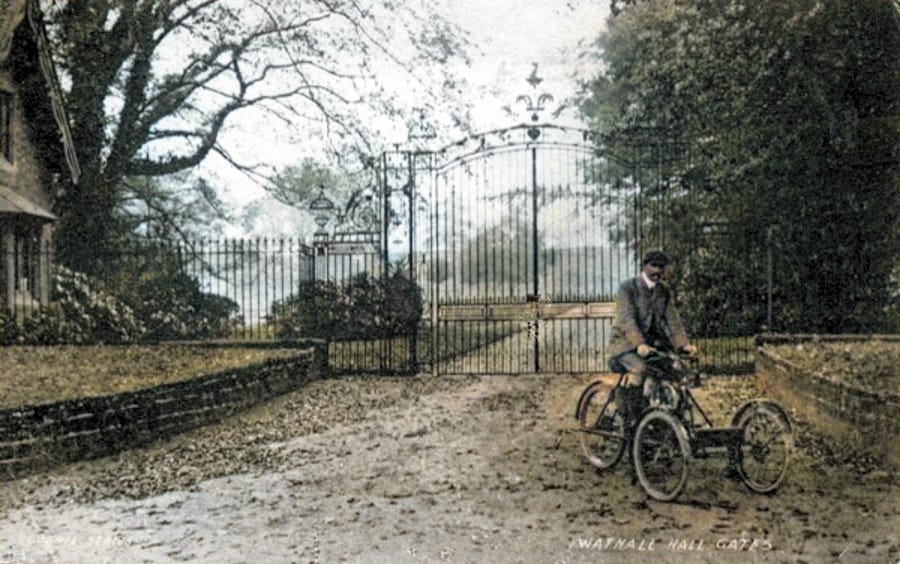
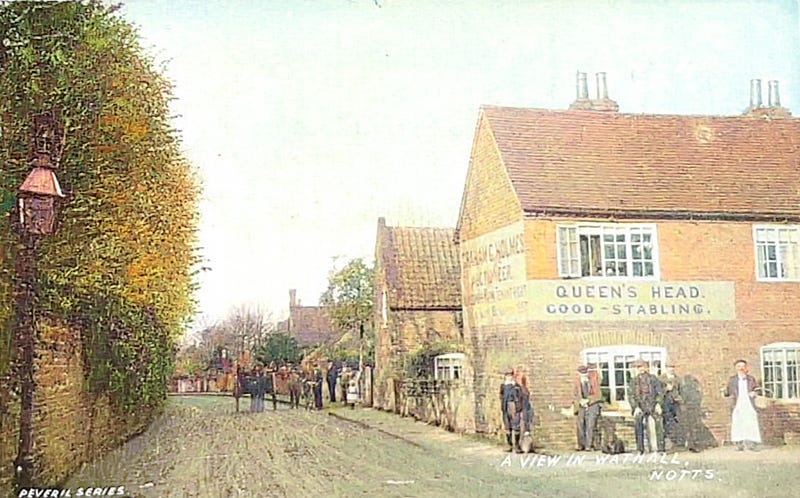
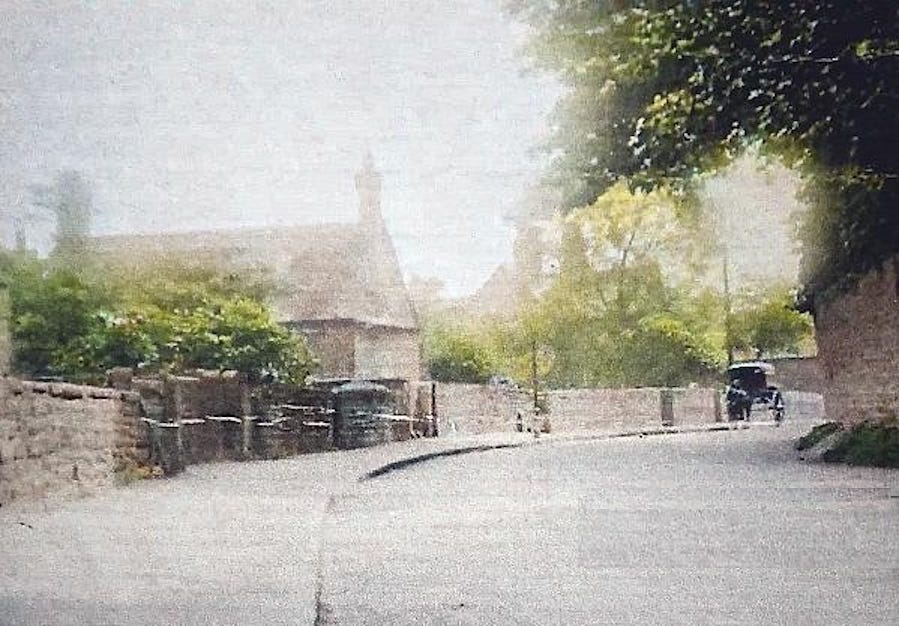
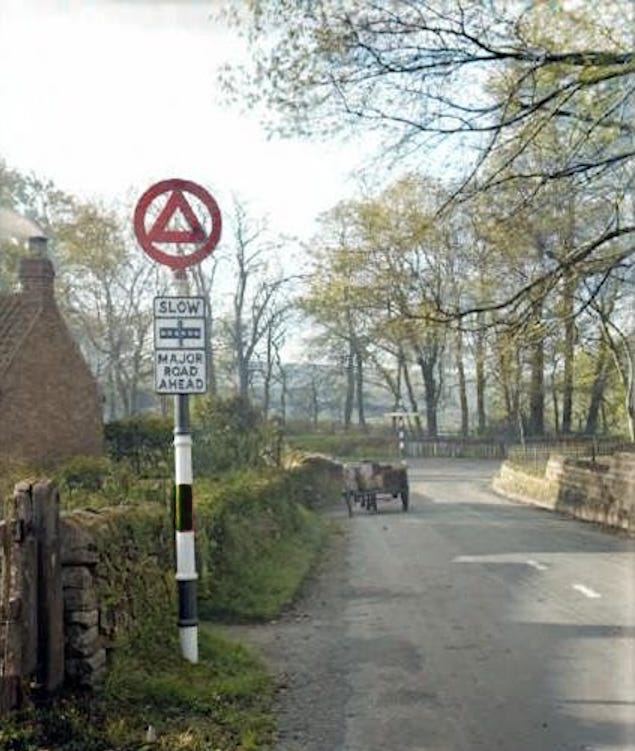
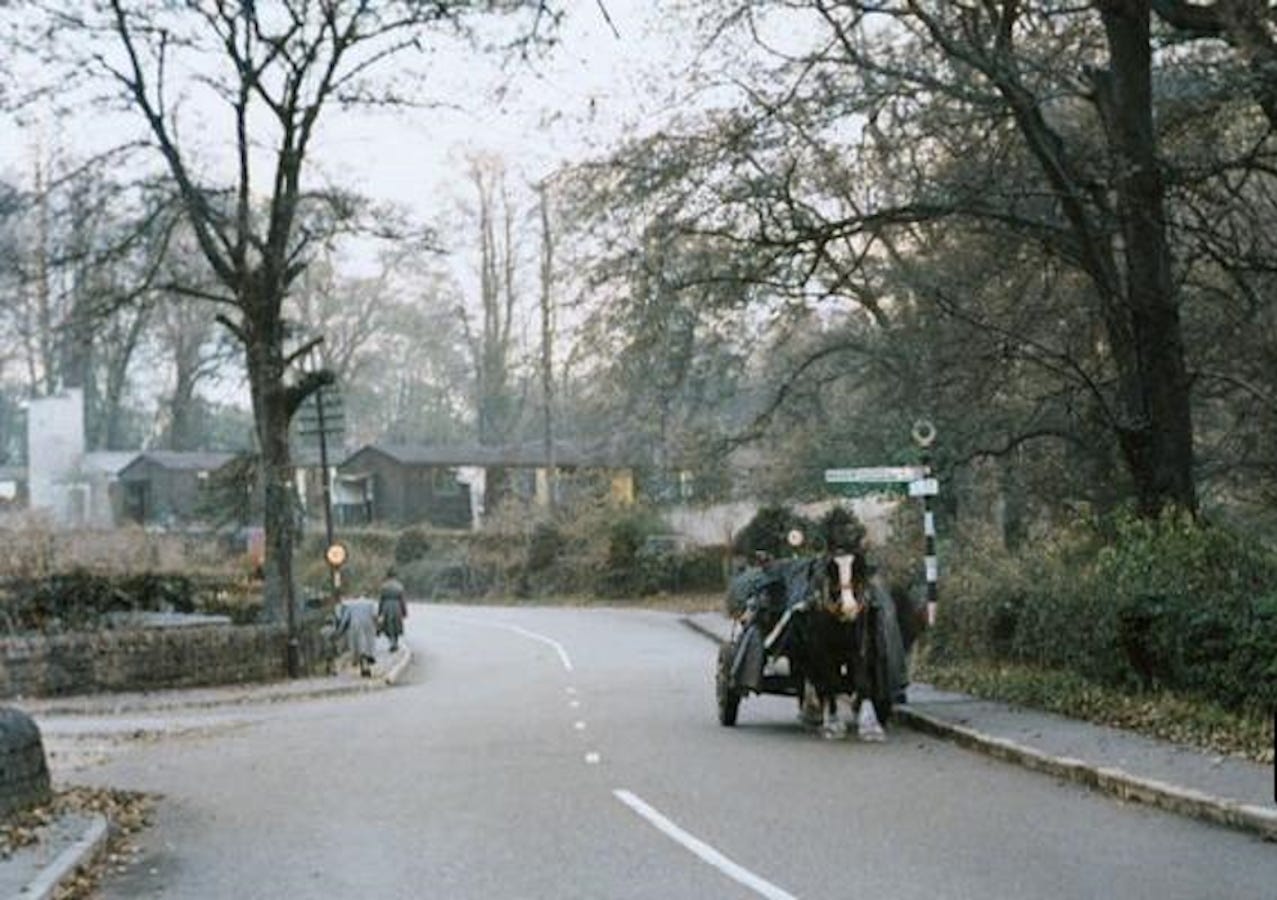
This same stretch of road, driven by horse and trap, gets a few mentions in DH Lawrence's work...
"We were swinging at a good pace under the beeches of the churchyard which stood above the level of the road. Meg, having settled her hat, bent her head to the wind, too much occupied with her attire to weep. We swung round the hollow by the bog end, and rattled a short distance up the steep hill to Watnall. Then the mare walked slowly."
- The White Peacock 1911
"But I’ve gone many times down Hucknall Long Lane to Watnall - and I like Watnall Park - it’s a great Sunday morning walk. Some of my happiest days I’ve spent haymaking in the fields just opposite the S. side of Greasley church - bottom of Watnall Hill - adjoining the vicarage."
- Letter to Rolf Gardiner 1926
In April 1912, it was also the scene of Lawrence's final farewell to his teenage girlfriend Jessie Chambers as he prepared to depart to Germany with new love Frieda Weekley. He was spending the weekend with Jessie's married sister May Holbrook in Moorgreen. Not knowing he was to be there, Jessie drove over in the trap from their Arno Vale farm with her father on the Sunday morning..
He rode part of the way [from Moorgreen] toward Nottingham with Jessie and her father, speaking “with a forced brightness" of his forthcoming trip to Germany. Jessie imagined that he was uncomfortable because of her father's tone of casualness, which contrasted with the warmth of former times. Lawrence got out of the trap by Watnall Hill and walked back across the fields to the Holbrooks' cottage... But the parting with Jessie had been moving, as if each of them had known it was final. When Lawrence got out of the trap, he stood in the road looking after it as it drove away. Jessie remembered, “I turned and saw him still standing where he had lighted, looking after us. I waved my hand and he raised his hat with the familiar gesture."
Sources:
Pictures courtesy of local Facebook group, Nottingham Archives, Picture the Past website; THE INTELLIGENT HEART The Story of D. H. Lawrence by HARRY T. MOORE; The King's England by Arthur Mee 1938 - http://www.nottshistory.org.uk/books/mee1938/introduction.htm



